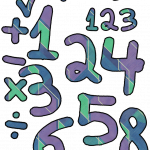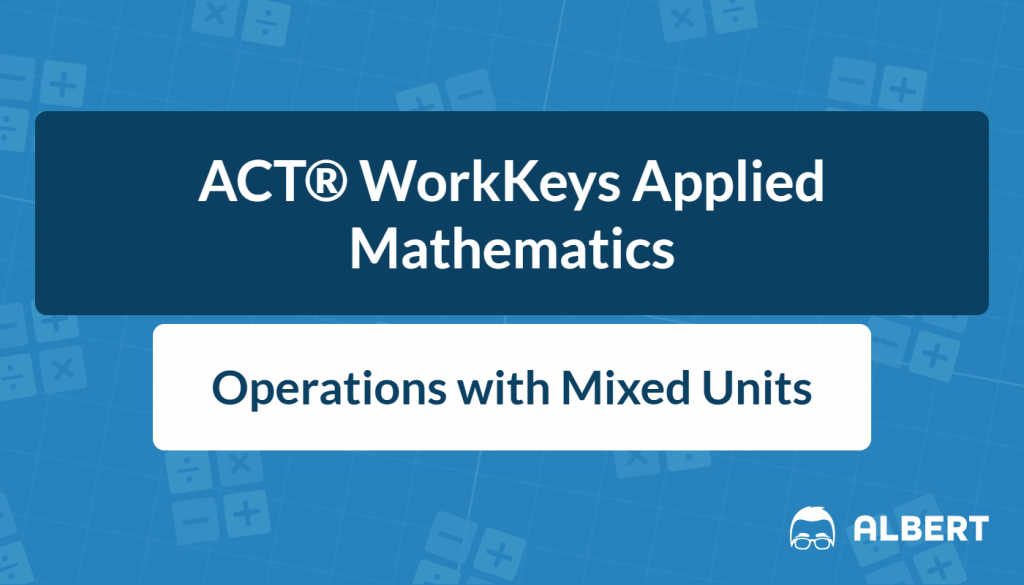Have you ever had trouble working with mixed units in a math problem? If so, you are certainly not alone! Many individuals encounter obstacles when it comes to understanding and managing mixed units in their calculations.
Being able to master operations that involve mixed units is extremely important. In this guide, we will explain how to work with mixed units. This will help you understand the concepts better. We will also show how these math operations can be used in real-life situations. Let’s begin!
What We Review
What Are Mixed Units?
Before we discuss our topic in detail, it’s important to understand what “mixed units” means.
Mixed units refer to using different measurement systems in conjunction with each other. For instance, this can include combinations like feet and inches or pounds and ounces. You often see these combinations of measurements in real life, like with cooking or construction. Understanding mixed units is important because it helps us navigate everyday tasks that involve measurements more effectively.
Basic Operations with Mixed Units
Let’s talk about the basic operations with mixed units, which include adding, subtracting, multiplying, and dividing. These tasks may seem easy, but it’s important to be careful and notice the details. Using different units can make things more complicated. You need to understand them clearly to make sure your calculations are correct.
Addition and Subtraction
Imagine you are in your kitchen, ready to bake a cake. Your recipe says you need 1 pound and 8 ounces of flour. However, you only have a bag that contains 2 pounds and 4 ounces. You need to find out how much flour will be left after you take what you need for the cake.
First, let’s make it easier by converting both measurements to ounces. Since 1 pound equals 16 ounces, we can change the amounts. For 1 pound and 8 ounces, we calculate it like this: 1 pound (16 ounces) plus 8 ounces equals 24 ounces.
Now, let’s convert the flour in your bag. For 2 pounds and 4 ounces, we do this: 2 pounds (32 ounces) plus 4 ounces equals 36 ounces.
Now we have both amounts in ounces. We subtract the amount for the cake (24 ounces) from the amount in your bag (36 ounces). Doing this gives us 36 ounces minus 24 ounces, which equals 12 ounces. So, you will have 12 ounces of flour left after making the cake.
If you want, you can also convert this leftover amount back into pounds and ounces. Since 12 ounces is less than a pound, it remains 0 pounds and 12 ounces. Thus, 12 ounces of flour will be left after baking your cake.
Multiplication and Division
If you want to multiply 3 feet 6 inches by 2, here’s what to do:
- Convert everything to inches. Since 1 foot is 12 inches, 3 feet 6 inches equals 42 inches.
- Multiply 42 inches × 2 = 84 inches.
- Convert back to feet if needed. 84 inches equals 7 feet because 84 divided by 12 is 7.
So, 3 feet 6 inches multiplied by 2 is 7 feet.
Real-World Applications

Working with mixed units, like inches with feet or pounds with ounces, is important for everyday life. It is not just for math tests. These calculations show up in many practical situations. Let’s look at some examples to see how these operations are used in real life.
Cooking and Baking
When cooking, you often see different units of measurement in recipes, which can be confusing. Knowing how to convert and calculate these measurements is vital for making your dishes turn out well. These types of questions frequently appear on the ACT® WorkKeys Applied Math test. Let’s try one out.
You are a pasta maker. You begin by mixing flour and eggs, which takes you 5 minutes. After that, you let the dough rest for 30 minutes. Once rested, it takes you 20 minutes to roll out the dough and cut it into shapes. Cooking the pasta in boiling water takes 10 minutes. Finally, you let the pasta cool for 5 minutes before serving. How long does the entire process take in total?
Solution:
- Mixing Ingredients: 5 minutes
- Dough Resting: 30 minutes
- Rolling and Cutting: 20 minutes
- Cooking the Pasta: 10 minutes
- Cooling the Pasta: 5 minutes
Now, we add these times together:
5 \text{ minutes} + 30 \text{ minutes} + 20 \text{ minutes} + 10 \text{ minutes} + 5 \text{ minutes} = 70 \text{ minutes}To convert 70 minutes into hours and minutes, follow these steps:
- Divide the total minutes by 60 to find the number of hours: 70 \div 60 = 1 \text{ hour} \text{( with a remainder of 10 minutes)} This means there is 1 full hour in 70 minutes.
- Calculate the remaining minutes: 70 - (1 \text{ hour} \times 60 \text{ minutes}) = 70 - 60 = 10 \text{ minutes}
Therefore, the total time of 70 minutes can be expressed as 1 hour and 10 minutes.
Home Improvement
Planning a home improvement project? You’ll frequently deal with mixed units when measuring materials. For example, if you are putting down carpet and need to find the area in feet and inches, knowing how to use mixed units will help you buy the right amount of material. This will help you avoid expensive errors. Let’s see how this looks on the ACT® WorkKeys Applied Math test.
You are a furniture maker. You have three pieces of wood for a project. The first piece measures 5 feet 11 inches. The second piece measures 3 feet 8.75 inches. The third piece measures 6 feet 2.5 inches. What is the total length of the three pieces of wood combined?
Solution:
Convert each measurement to inches:
- First piece: 5 \text{ feet} = 5 \times 12 = 60 \text{ inches} 60 \text{ inches} + 11 \text{ inches} = 71 \text{ inches}
- Second piece: 3 \text{ feet} = 3 \times 12 = 36 \text{ inches} 36 \text{ inches} + 8.75 \text{ inches} = 44.75 \text{ inches}
- Third piece: 6 \text{ feet} = 6 \times 12 = 72 \text{ inches} 72 \text{ inches} + 2.5 \text{ inches} = 74.5 \text{ inches}
Add the lengths together:
71 \text{ inches} + 44.75 \text{ inches} + 74.5 \text{ inches} = 190.25 \text{ inches}Convert the total back to feet and inches:
\text{Total Feet} = 190.25 \div 12 = 15 \text{ feet} \text{( with a remainder of 10.25 inches)}So, the total length of the three pieces of wood combined is 15 feet 10.25 inches.
Tips for Mastering Mixed Units
- Practice, Practice, Practice: The best way to become comfortable with mixed units is through practice. Try solving a variety of problems until they become second nature.
- Use Conversion Charts: Keep a conversion chart handy for quick reference. This is especially helpful when you’re just starting.
- Review Your Work: Always check your calculations again to ensure they are correct. This is especially important in real-life situations where errors can be expensive.
- Understand the Context: Make sure you understand the context of the problem. Knowing why you’re converting units can often guide you to the right solution.
Conclusion: Preparing to Solve Problems with Mixed Units
Understanding mixed units is more than just a math skill; it helps in everyday tasks. Learning these concepts can be helpful for the ACT® WorkKeys Applied Math Test or a DIY project. So, practice and see how math can become a helpful tool instead of a challenge.
Sharpen Your Skills for ACT® WorkKeys Applied Math
Are you preparing for the ACT® WorkKeys Applied Math test? We’ve got you covered! Try our review articles designed to help you confidently tackle real-world math problems. You’ll find everything you need to succeed, from quick tips to detailed strategies. Start exploring now!
- How to Convert Between Familiar Units Using a Conversion Chart
- Multi-Step Conversions Made Easy: Breaking Down Complex Problems
Need help preparing for the ACT® WorkKeys Applied Math Test?
Albert has hundreds of ACT® WorkKeys practice questions and full-length practice tests to try out.








